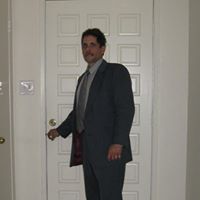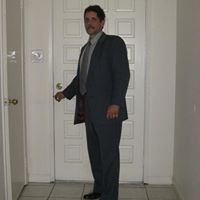Charles J Brand
age ~73
from Newton, NJ
Charles Brand Phones & Addresses
- Newton, NJ
- 68 Fox Hollow Rd, Sparta, NJ 07871 • 9737260066
- Little Falls, NJ
- 68 Fox Hollow Rd, Sparta, NJ 07871 • 2017260066
Work
-
Company:Dolan & Dolan
-
Address:1 Legal Lane At 53 Spring St Po Box D, Newton, NJ 07860
-
Specialities:Tax - 34% • Corporate / Incorporation - 33% • Bankruptcy / Chapter 11 - 33%
Education
-
Degree:Graduate or professional degree
Ranks
-
Licence:New Jersey - Active
-
Date:1978
Specialities
Taxation Law • Estate Planning Law • Estate Administration • Business Transactions • Corporate Law • Bankruptcy Law • Collections
Lawyers & Attorneys

Charles J Brand, Newton NJ - Lawyer
view sourceAddress:
Dolan & Dolan
1 Legal Lane At 53 Spring St Po Box D, Newton, NJ 07860
9733831600 (Office)
1 Legal Lane At 53 Spring St Po Box D, Newton, NJ 07860
9733831600 (Office)
Licenses:
New Jersey - Active 1978
Specialties:
Tax - 34%
Corporate / Incorporation - 33%
Bankruptcy / Chapter 11 - 33%
Corporate / Incorporation - 33%
Bankruptcy / Chapter 11 - 33%

Charles J. Brand, Newton NJ - Lawyer
view sourceOffice:
53 Spring Street, One Legal Lane, Newton, NJ
Specialties:
Taxation Law
Estate Planning Law
Estate Administration
Business Transactions
Corporate Law
Bankruptcy Law
Collections
Estate Planning Law
Estate Administration
Business Transactions
Corporate Law
Bankruptcy Law
Collections
ISLN:
908844690
Admitted:
1978
University:
Lehigh University, B.S.
Law School:
Rutgers University, J.D.
Us Patents
-
Dual Transmitter Arrangement With Back-Up Switching
view source -
US Patent:6438359, Aug 20, 2002
-
Filed:Jul 19, 1996
-
Appl. No.:08/684651
-
Inventors:Bernard Bossard - New York NY
Charles Brand - Colts Neck NJ -
Assignee:Cellularvision Technology Telecommunications, L.P. - Freehold NJ
-
International Classification:H04B 102
-
US Classification:455103, 455115, 348723
-
Abstract:Reliable transmission of signals in a multi-channel system is achieved by transferring signal inputs from a defectively operating or inoperative transmitter to another transmitter which continues to transmit other channels. At least two transmitters are operated normally, each transmitting its own block of channels. A sensor detects when the output of one transmitter is improper or non-existent, and causes a change-over switch to operate. Operation of the switch adds the block of channels which had come from the one transmitter to the other (or one or more) of the transmitters, so that the remaining transmitter or transmitters now provide all the channels.
-
Low Noise Wide Dynamic Range Amplifiers
view source -
US Patent:52764060, Jan 4, 1994
-
Filed:Feb 13, 1992
-
Appl. No.:7/837345
-
Inventors:Stephen J. Samay - Metuchen NJ
Charles S. Brand - Colts Neck NJ -
Assignee:Trontech, Inc. - Eatontown NJ
-
International Classification:H03F 316
-
US Classification:330277
-
Abstract:Certain GaAs FET devices are employed to accomplish low noise performance and simultaneous high power handling capability, i. e. high dynamic range performance, in an amplifier using larger GaAs FET devices. Such devices are incorporated in different circuit configurations to achieve amplifiers having, simultaneously, a low noise figure, higher input/output intercept performance, higher output power, and improved ruggedness toward high input interfering signals, while not sacrificing other highly desirable terminal characteristics, (i. e. gain, VSWR, etc. ).
-
Transmission Of Digital And Analog Signals In The Same Band
view source -
US Patent:59497939, Sep 7, 1999
-
Filed:Jul 22, 1996
-
Appl. No.:8/681189
-
Inventors:Bernard Bossard - New York NY
Charles Brand - Colts Neck NJ -
Assignee:Cellularvision Technology & Telecommunications, L.P. - Freehold NJ
-
International Classification:H04J 100
H04H 104 -
US Classification:370487
-
Abstract:A combination of broadband program materials, such as TV, plus digital communications services of all types, are broadcast to a cell in the same frequency band, such as 27. 5 to 28. 5 GHz. The combination of all the transmitted channels have a combined bandwidth substantially exceeding the frequency band. At least some of the channels are transmitted with two diversity characteristics different from those of other channels. In one embodiment analog signals transmit the broadband services, preferably using wide deviation FM modulation, the FM channels filling the band. By choosing carrier frequencies selectively, between 5 and 9 T-1 digital channels can be broadcast in each FM channel when polarization is the same. Differing polarization of digital and FM signals in the same band can enable selection and detection of the desired one of a full spectrum of digital signals, or any one of the analog signals.
Name / Title
Company / Classification
Phones & Addresses
Counsel
Dolan and Dolan PA
1 Legal Ln, Newton, NJ 07860
9733831600, 9733837823
9733831600, 9733837823
Hart & Iliff Fuel & Energy Systems
4 Hampton St, Newton, NJ 07860
9733831421
9733831421
President
Hart & Iliff Fuel Oil Co (Inc)
Ret Fuel Oil Dealer Plumbing/Heating/Air Cond Contractor
Ret Fuel Oil Dealer Plumbing/Heating/Air Cond Contractor
4 Hampton St, Fredon, NJ 07860
PO Box 591, Fredon, NJ 07860
9733831421
PO Box 591, Fredon, NJ 07860
9733831421
Director, Vice President
Simmons Holding Company
Director
Pan-American Pictures Corporation
Resumes

Charles Brand
view source
Charles Brand
view source
Charles Brand
view source
Charles Brand
view sourceLocation:
United States
License Records
Charles J Brand
Address:
Newton, NJ
License #:
19HC00083800 - Active
Category:
HVACR
Issued Date:
Aug 22, 2014
Expiration Date:
Jun 30, 2018
Type:
Master HVACR Contractor
Charles J Brand
Address:
Newton, NJ
License #:
19HC00083800 - Active
Category:
HVACR
Issued Date:
Aug 22, 2014
Expiration Date:
Jun 30, 2018
Type:
Master HVACR Contractor
Charles J Brand
Address:
Newton, NJ
License #:
19HC00083800 - Active
Category:
HVACR
Issued Date:
Aug 22, 2014
Expiration Date:
Jun 30, 2018
Type:
Master HVACR Contractor
Charles J Brand
Address:
Newton, NJ
License #:
19HC00083800 - Active
Category:
HVACR
Issued Date:
Aug 22, 2014
Expiration Date:
Jun 30, 2018
Type:
Master HVACR Contractor
Charles J Brand
Address:
Newton, NJ
License #:
19HC00083800 - Active
Category:
HVACR
Issued Date:
Aug 22, 2014
Expiration Date:
Jun 30, 2018
Type:
Master HVACR Contractor
Isbn (Books And Publications)


Ludovico Ariosto: A Preface to the Orlando Furioso
view sourceAuthor
Charles Peter Brand
ISBN #
0852242468
Real Estate Brokers

Charles Brand, Elizabeth NJ Agent
view sourceWork:
Century 21
Elizabeth, NJ
9083555955 (Phone)
Elizabeth, NJ
9083555955 (Phone)

Charles Brand
view source
Jean Charles Brand
view source
Charles Brand
view source
Charles Brand
view source
Charles Brand
view source
Charles Brand Benavides
view source
Charles Daytwon Brand
view source
Charles A. Brand
view sourceYoutube
Classmates

Charles Brand
view sourceSchools:
Saint John Neumann Regional Catholic School Lilburn GA 1996-2001, Saint Anthony of Padua School Baltimore MD 2001-2003
Community:
Virginia Ginger, John Mulcahy, Mike Grim, Judith Gast

Charles Brand
view sourceSchools:
Mattawan High School Mattawan MI 1990-1994
Community:
Lilly Kuiper

Charles Brand, Jonesboro ...
view source
Andrew Warde High School,...
view sourceGraduates:
Charles Brand (1966-1970),
Kathy Martin (1955-1959),
Steve Frankel (1956-1960),
Elizabeth Ross (1977-1981),
Debra Roskowski (1971-1975)
Kathy Martin (1955-1959),
Steve Frankel (1956-1960),
Elizabeth Ross (1977-1981),
Debra Roskowski (1971-1975)

University of San Diego H...
view sourceGraduates:
Charles Brand (1983-1987),
Fiona Graham (1989-1993),
Daniel Luevanos (2000-2004),
Sharon Storey (1970-1972),
Celina Elguezabal (1980-1984)
Fiona Graham (1989-1993),
Daniel Luevanos (2000-2004),
Sharon Storey (1970-1972),
Celina Elguezabal (1980-1984)

Jonesboro High School, Jo...
view sourceGraduates:
Charles Brand (1963-1967),
RICKY MONTZ (1975-1979),
John DeCurtis (1983-1987),
jack gray (1972-1976),
Barbie Dubson (1981-1985)
RICKY MONTZ (1975-1979),
John DeCurtis (1983-1987),
jack gray (1972-1976),
Barbie Dubson (1981-1985)

Camden High School, San j...
view sourceGraduates:
Bonnie Waterman Ashurst (1959-1962),
Renee Reed (1967-1971),
Jerry Lovejoy (1974-1978),
Charles Brand (1974-1978)
Renee Reed (1967-1971),
Jerry Lovejoy (1974-1978),
Charles Brand (1974-1978)

Norton High School, Norto...
view sourceGraduates:
DIANA M C FARLAND (1968-1972),
Dan Knighton (1979-1983),
Charlie Zenner (1962-1966),
Charlie Brand (1967-1971),
Kelly Croghan (1979-1983)
Dan Knighton (1979-1983),
Charlie Zenner (1962-1966),
Charlie Brand (1967-1971),
Kelly Croghan (1979-1983)
Myspace
Flickr
Googleplus

Charles Brand
Education:
Imperial College London - Chemical Engineering, Imperial College London - Mechanical Engineering, École nationale supérieure des mines de Nancy

Charles Brand

Charles Brand

Charles Brand
Work:
Proj

Charles “Goź” Brand

Charles Brand

Charles Brand
Get Report for Charles J Brand from Newton, NJ, age ~73
















